Thesis on the Audiovisual
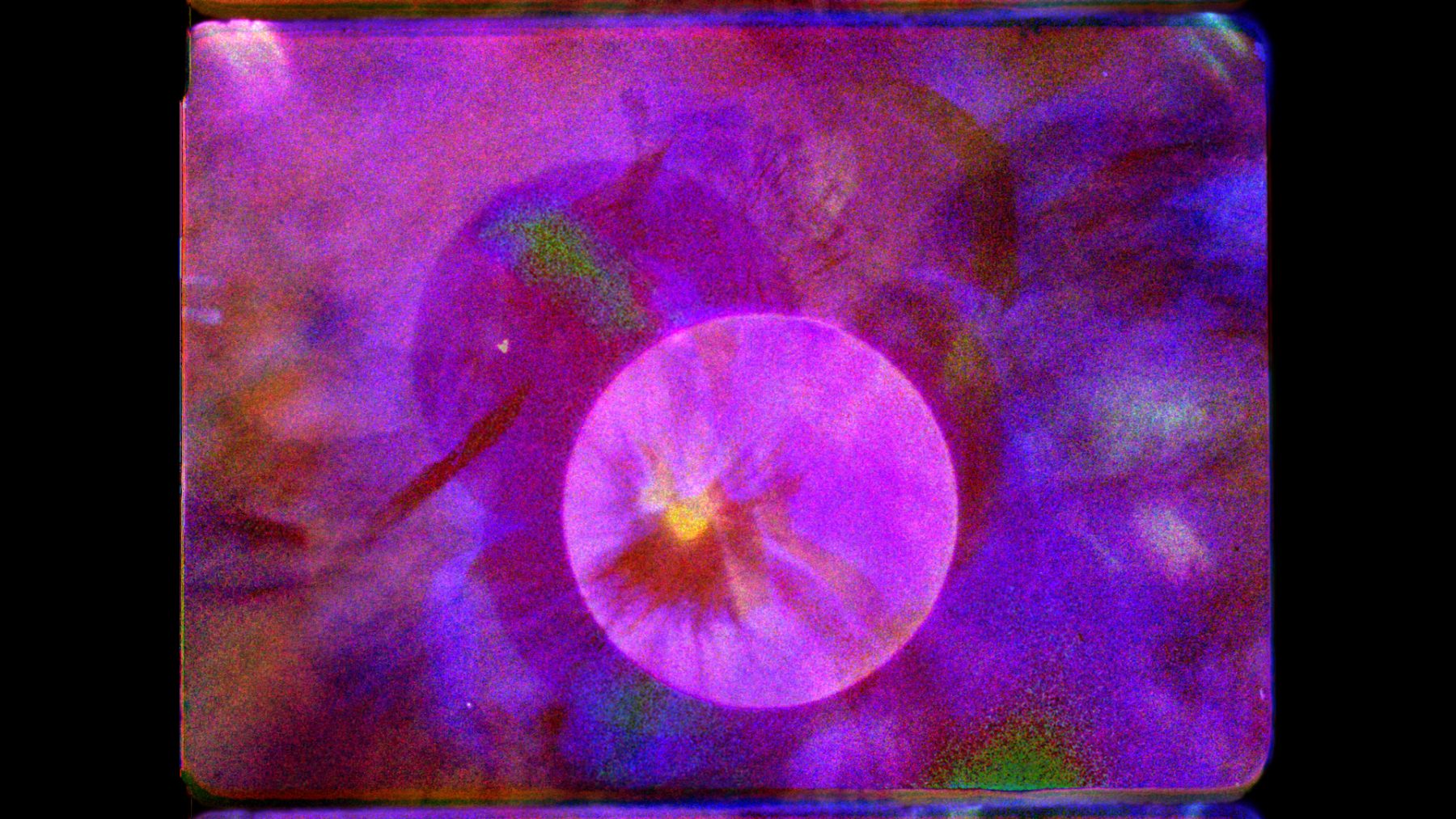
Thesis 1: In political cinema of agitation there is a juxtaposition of the old and the new that entails an audiovisual practice in the form of aberration. In this cinema, agitation no longer emerges from new awareness nor calls for mass mobilization, but rather consists of putting everything in a trance, including the camera itself, relating the different instances of violence to each other, so that the trance, the crisis or the aberration determines a constructivity that, intervened from the real, produces collective audiovisuals of the Missing People.
Thesis 2: A political cinema of agitation whose condition of possibility is the ravages of neoliberal capitalism and leads, in the audiovisual realm, to a double form of aberration: the sinister and estrangement.
Thesis 3: The exacerbation of the sinister leads to the intolerable. The vision, presence and insistence of the intolerable opens up a horizon that enables the emergence and autonomy of the Missing People.
Thesis 4: In the political cinema of agitation there are three forms of the People: The Supposed People, the Missing People and the Population[1].
Thesis 5: The political cinema of agitation leads to an autonomy of images. Autonomy is not separatism, nor is it the taking over or occupation of the State, nor is it the totalitarian productivity of images, but rather the creation and appropriation of parallel sensory, perceptual, poetic and speculative structures within existing structures.
____________
[1] The space of media representation that corporate governments have built around them excludes the People. What corporate governments presuppose as a correlate of their own unpopular image is a population, a mass that they can administer, quantify, manage. The consistency of this space of representation is completely homogeneous, overdetermined, quantified and non-antagonistic. The determining dimension of the official discourse aims to model a total, coherent image that ends once and for all replacing or transforming the Missing People and the Supposed People into a Population. What the image emporium of corporate governments presupposes is a spectator-population or an expectant-population, a mass of hallucinated people that responds out of the unison of a passive civility to the question: what is behind the governmental or corporate images and audiovisual productions? Or: to what expectant totality do the monstrous stagings such as those continually undertaken by world corporate governments and their tele-computerized allies against all possible construction and articulation of Missing Peoples refer? The quantified, subjugated mass intimidated by these questions answers without a voice and from the rostrum of its atomization, responds as a Population. Behind the sound-images that corporate-cinemas and government-cinemas disseminate, behind the hegemonic empowerment of the corporate-sovereign-mannequins, there is an ideal of a spectator: a regulated population without a clear political territory, in a desolate environment of insecurity, as well as in a vertiginous aesthetic-political uprooting.
____________
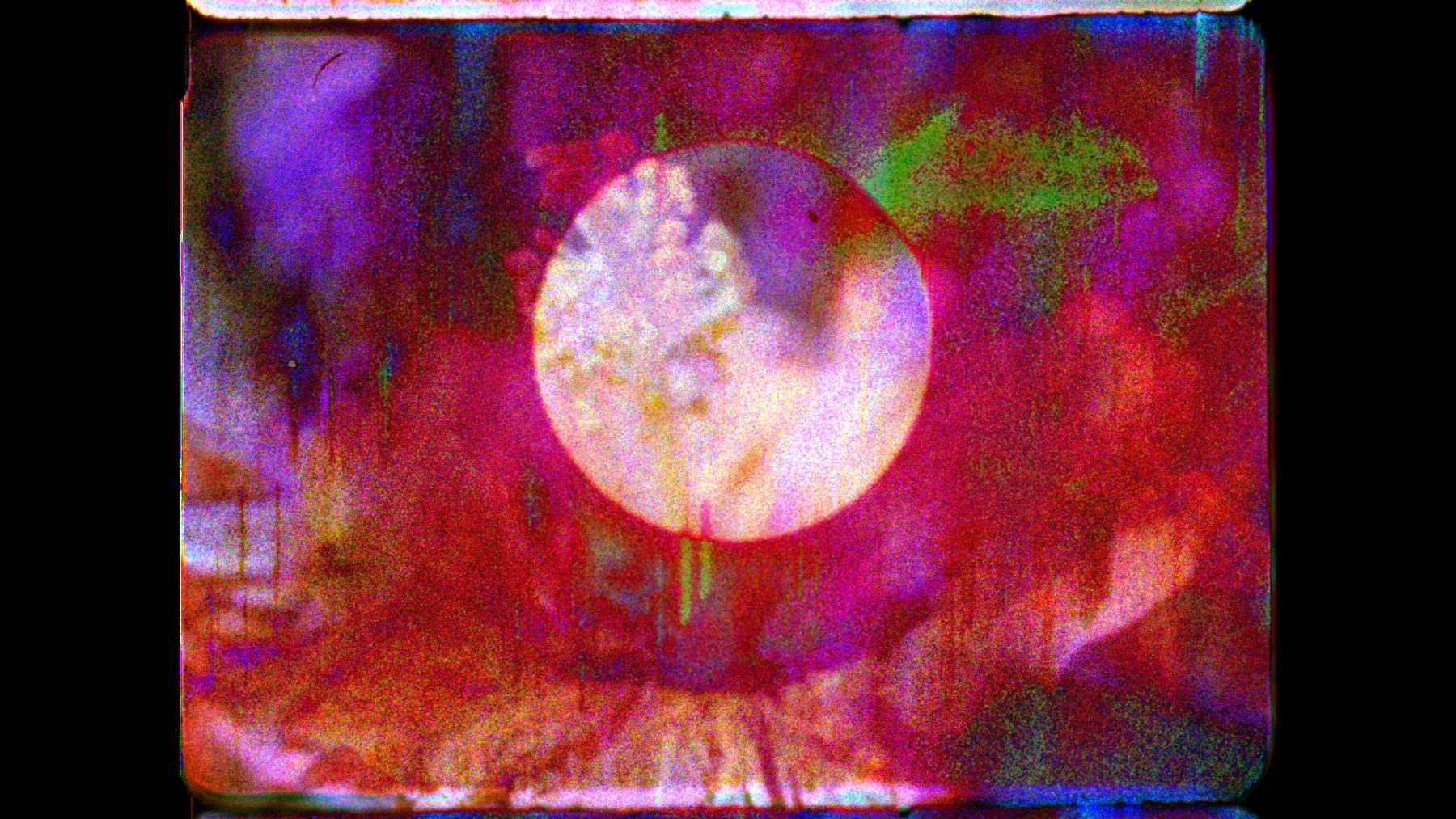
Thesis 6: One of the forms of the political cinema of agitation is the cinema of appropriation, which implies an aberrant sensory practice. The liturgical dimension of this aberration is burial (funerary trance).
Thesis 7: The burial of images and sounds is the kinetic trance of the appropriated audiovisual document.
Thesis 8: All such appropriation mobilizes and vindicates the opacity of the document.
Thesis 9: The opacity of the document is a sensory quality that activates the Burial-Exhumation dialectic.
Thesis 10: The Burial-Exhumation dialectic is the iconoclastic and materialist contradiction of appropriation cinema.
Thesis 11: Burial and Exhumation entail the testimonial dimension of appropriation.
Thesis 12: The sinister rapture of appropriation is shamanic possession, conversion, and bonding.[2]
Thesis 13: Shamanic possession is the sensory outburst of the political cinema of agitation.
Thesis 14: Shamanic conversion is the hyperkinetic stasis of the cinema of agitation.
Thesis 15: Shamanic bonding involves the vindication of the irrational character of testimony as well as its supernatural drift.
____________
[2] The determination of these three shamanic procedures involves three specifications: perspectivist possession, transformational conversion and speculative bonding.
____________

Thesis 16: The perception of a testimony as supernatural, dreamlike, messianic, excessive, irrational and insane is what enables a sensorial appropriation and connection by the document.
Thesis 17: The sensory appropriation of the audiovisual document presupposes an Aesthetics of Trance as a condition.
Thesis 18: In the Aesthetics of Trance, the immediate data of sensation induces an agitation in the perception of the documents.
Thesis 19: The mediate states of perception mobilize an appropriation of the documents.
Thesis 20: Agitation, appropriation and superstition are the impure practices of the Aesthetics of Trance.[3]
Thesis 21: The Aesthetics of Trance makes possible the semiotic collision and internality of materialism and shamanism.
Thesis 22: Materialism is the empirical, contingent, circumstantial, sensory and concrete dimension of objects, documents, archives, remains, and elements.[4]
Thesis 23: Shamanism vindicates the suggestion, the omen, trance states, the spell and the superstition on the basis of objects and testimonies.
Thesis 24: Shamanic Materialism proceeds by fragments, ruptures, loops, clusters, modules, drifts, ascents, descents, series, spirals, vortexes, pulses, rhythms, entropy, negentropy, hypostasis, collisions, linkages, aberrations, folds, burials, unearthings; and everything which reveals intermittent constellations and from whose magma figures, agitations, forms, structures, processes, relationships, perceptions, speculations and sensations emerge. Shamanic Materialism is a Mesoamerican spell unleashed.[5]
____________
[3] One of the non-impure and absolutive correlates of the Aesthetics of Trance is the funeral liturgy.
violence and problems that have still not been reconciled today.
[4] The materialistic part of shamanic materialism forces us to place all audiovisual materials in a horizon of radical contingency as a field of indiscernibility common to all the collective contents of the image; this mobilizes us to assume an autophagic principle of relationality between images and sounds that are absolutely contingent, which in turn enables us to unleash a rhythmic outburst dependent, on the one hand, on a radical non-commutativity in the order of a temporality fractured by iterative modules, and on the other, on a constant tension between the apparent impossibility of continuous commutation and the reality of an expansive recursion as a horizon of formal determinability of the collective contents of the image. This brings us to the shamanic aspect of shamanic materialism through which we can intervene, induce and connect a trance as a rhythmic and bodily rapture on the determinability of audiovisual material according to an eidetic, archaic, ancestral and mythical differentiality.
[5] This unleashing deploys an intermittent and glowing interrogation that spans centuries through time, reaching us in an extremely current moment of danger and perplexity; the aforementioned Mesoamerican spell prompts us to ask: What land is this? The origin of the question lies in the astonishment that the mercenary and later chronicler Bernal Díaz del Castillo expressed when entering an “unknown” land; In the heart of an “unknown” and “unnamed” America, the European Díaz del Castillo made clear the crisis of his colonial somnambulism, fusing his astonished perception with the intermittent glow of a non-European reality; here what the Europeans really discovered was the perplexity of their own ignorance. His ecstatic question crossed the destructive centuries of colonialism and European barbarism to be taken up, among others, by the writer Juan Rulfo, who recovered it from abandonment in the wasteland and the devastated lands left behind by five centuries of civilizing excess. Now we can recover the question, not only from perplexity and wasteland but from trance and cinematic rapture. Thus, from an intermittent and glittering land, we also have the trance as “images of relation.” We may recall that the “letters of relation” were the way that Hernan Cortés informed the Spanish Crown about the “progress” of his ominous conquest. Let us therefore recover the form of the “relation” as a report intended to in-form, but as the un-formed found in multiple “images of relation”. Thus, through audiovisuals we seek to think, articulate, integrate and connect the historical absence of reconciliation entailed by the arrival of Europeans to the land later known as America as well as the destruction of Tenochtitlan in 1521. Five centuries after these events, we assert the Aesthetics of Trance and Shamanic Materialism as forms of multinaturalist resistance that move us to re-appropriate, transfer and transform the ominous corrosive process induced by that historical and asymmetric clash between radically different worldviews and which brought about the birth and development of modern nation states in the Americas with their resulting
____________
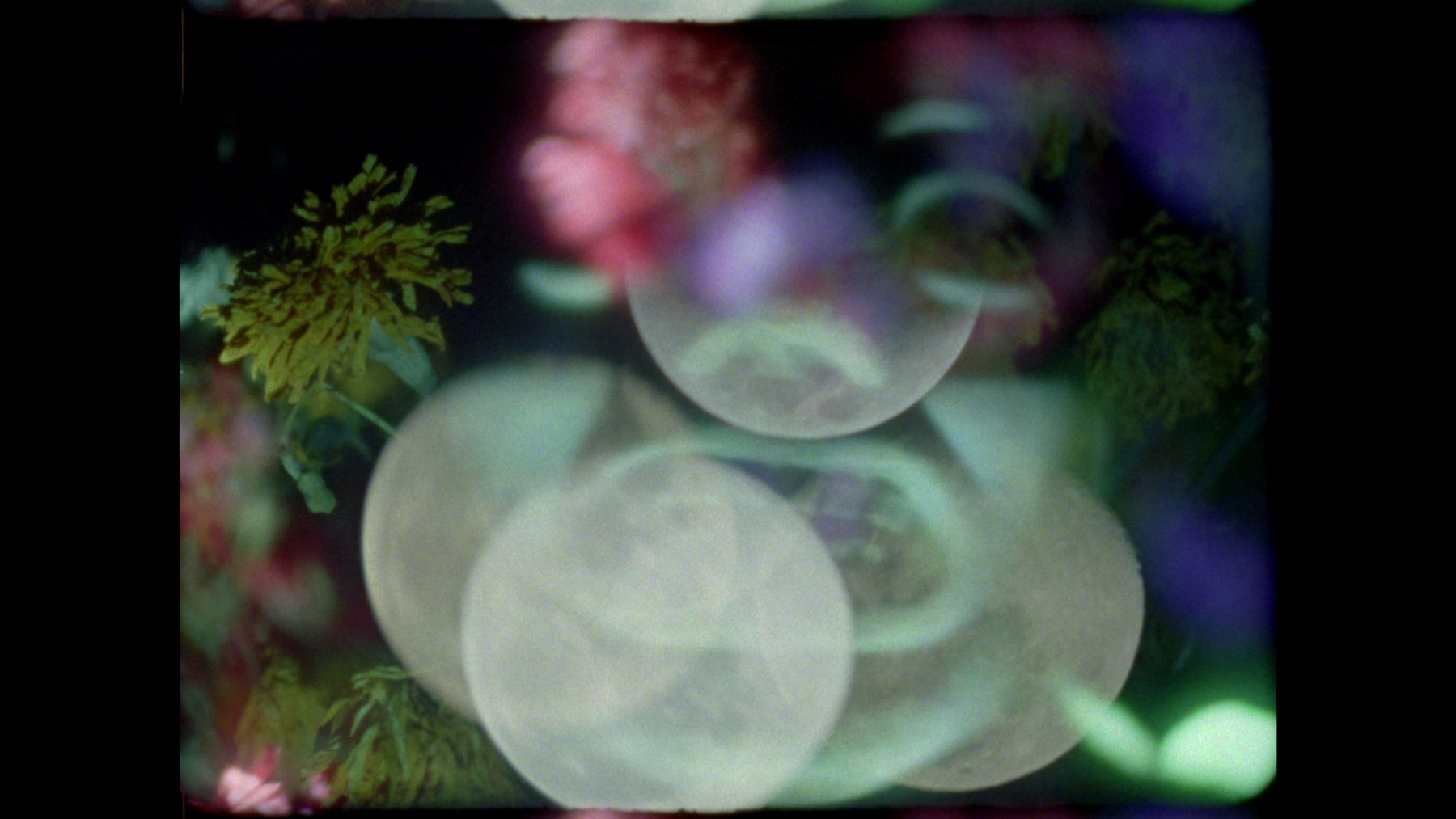
Thesis 25: Shamanic Materialism makes simultaneous perception possible according to two incompatible, paradoxical and irreconcilable perspectives.
Thesis 26: Incompatible perspectives are, at bottom, unreconciled perspectives.
Thesis 27: The historical a priori of Shamanic Materialism is non-reconciliation.
Thesis 28: Shamanic Materialism asserts an eventual perspectivism of History.
Thesis 29: Non-reconciliation is the transhistoric core of History.
Thesis 30: History is a grave for the eye. An overdetermination for the ear.
Thesis 31: The eye and the ear are attractors of contingencies.
Thesis 32: Materialism entails a prodigious accumulation of contingencies.
Thesis 33: Any contingency can be appropriated, organized and reformulated as a multinaturalist circumstance.[6]
Thesis 34: Every multinaturalist circumstance is an immediately relational multiplicity.
Thesis 35: What exists in multinature[7] are not self-identical entities perceived differently, but immediately relational multiplicities.
Thesis 36: Shamanic possession is the sensory outburst of the political cinema of agitation in an environment of immediately relational multiplicities.
Thesis 37: Cinema-trance implies the ability to see simultaneously according to incompatible, paradoxical and irreconcilable perspectives.
[6] The circumstance is the point of radical connection between contingency and facticity from which reason emerges. It is this situational sense of the circumstance in which reason acquires a possible determinability at the same time that it appears as a larval dimension that accompanies every entity, process and becoming (it should also be noted that the situational sense of the circumstance determines place, position and perspective). This perspective of nesting and infestation of reason supposes the nihilisation of something given. Reason, therefore, is, in principle, a lack of being with respect to a given being and not the emergence of a full being, this parasitic dimension of reason constitutes its expansive infra-being, that nothing of being, nothing of History in which contingency and facticity are linked.
[7]Multi-nature is a field of shamanic intersection between a constant epistemology and variable ontologies.
____________
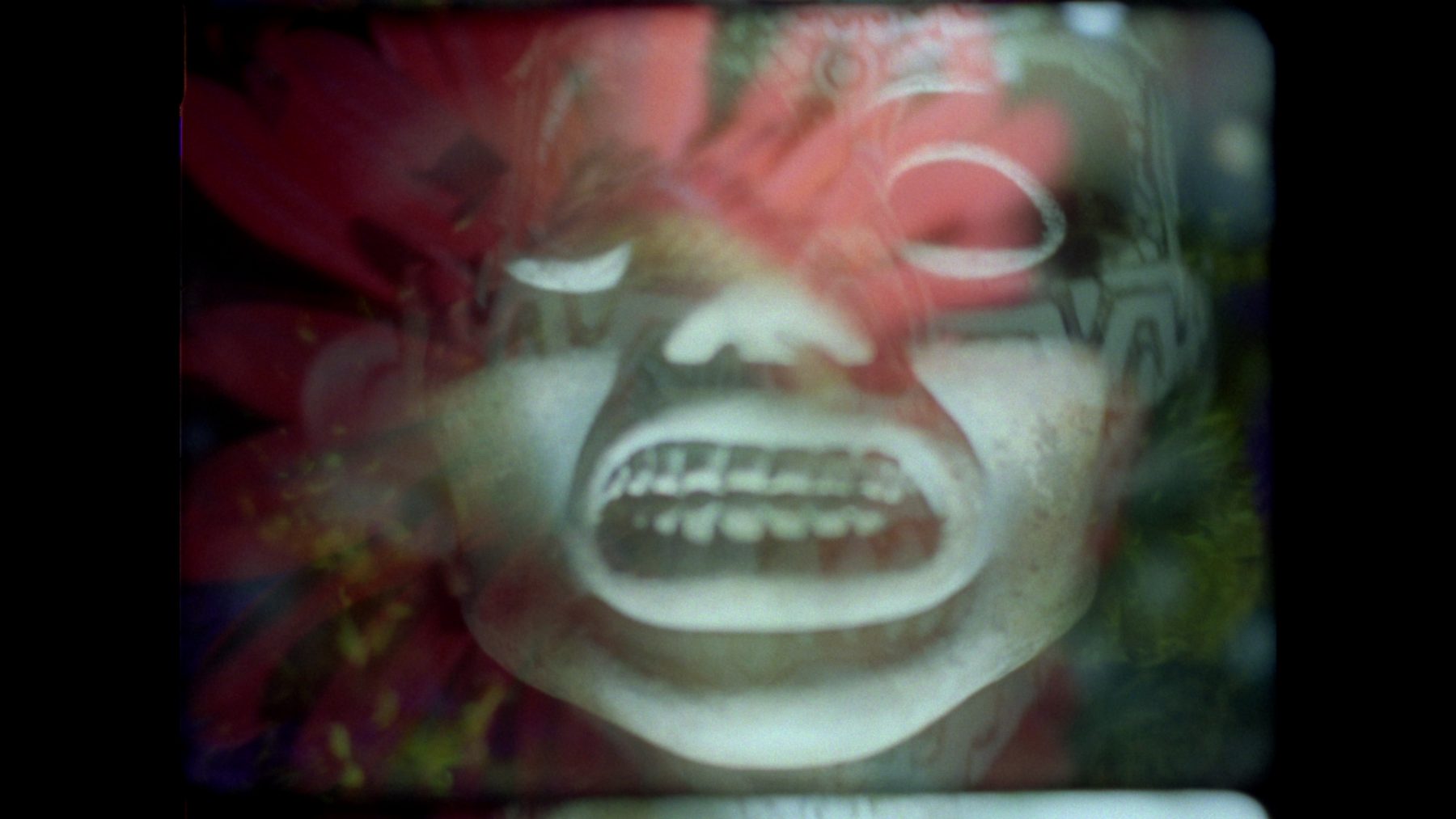
Thesis 38: The cinema-trance of agitation induces a superposition of heterogeneous states as well as the explosion in the beings of qualitative multiplicity typical of myth.
Thesis 39: Myth consists of a record of the movement of updating the present state of things from a precosmological, prehistoric and ancestral condition.
Thesis 40: Every mythical metamorphosis entails an eventual trance of contingencies.
Thesis 41: Myth is a multinaturalist hyperimage in motion.
Thesis 42: The determination and dialectical organization of the collective contents of contingent images constitutes and displays a hyperimage.
Thesis 43: Every hyperimage expresses an epoch of the image of the world as well as a system of current relational images.
Thesis 44: Cinema is a dialectical hyperimage of motion.[8]
Thesis 45: TV is a media-relational hyperimage of culture.
Thesis 46: The Internet is a relational hyperimage of control devices.
Thesis 47: The pandemic is a metabolic overdetermination of systems of images.
Thesis 48: All metabolic overdetermination implies cognitive fracking as a practice of digital reason.
Thesis 49: Cognitive[9] fracking[10] is a productivist overdetermination that integrates and enables the relational hyperimage of control devices.
Thesis 50: Advertising, digital interaction, and algorithmic processing of data instrumentalize the productivity of contingent reason.
____________
[8] Currently, cinema lies between the zombie fetishism of the film, the instrumental tourism of museum finiteness, the tyranny of digital high definition of the industry, the simulation and forensic immersion of reality and the viral realm of low-definition. By failing to take into account the eidetic chiasm produced by the arrival of Television for Cinema, the Internet for Television and the Pandemic for the Internet, Cinema is shipwrecked between a unilateral ideological drift and a neoliberal disengagement.
[9] The cognitive and ontological catastrophe that neoliberal capitalism supposes and implements subtracts from the nature of experience, thus revealing the objectifying emptiness of being, while in the audiovisual this subtraction leads to the double form of aberration: the sinister and estrangement.
[10]Against the grain of cognitive fracking as a productivist activity of corporate control, we would like to point out and assert a series of audiovisual strategies (which are continually in danger of being exploited by neoliberal fracking itself) that come from three filmic (un)forms of industrial cinema: 1) The Blob (1988) by Chuck Russell: absorption, assimilation and expansion. 2) Alien (1979) by Ridley Scott: accumulation, nesting and infestation. 3) Predator (1987) by John McTiernan: strategy, camouflage and ritual.
____________
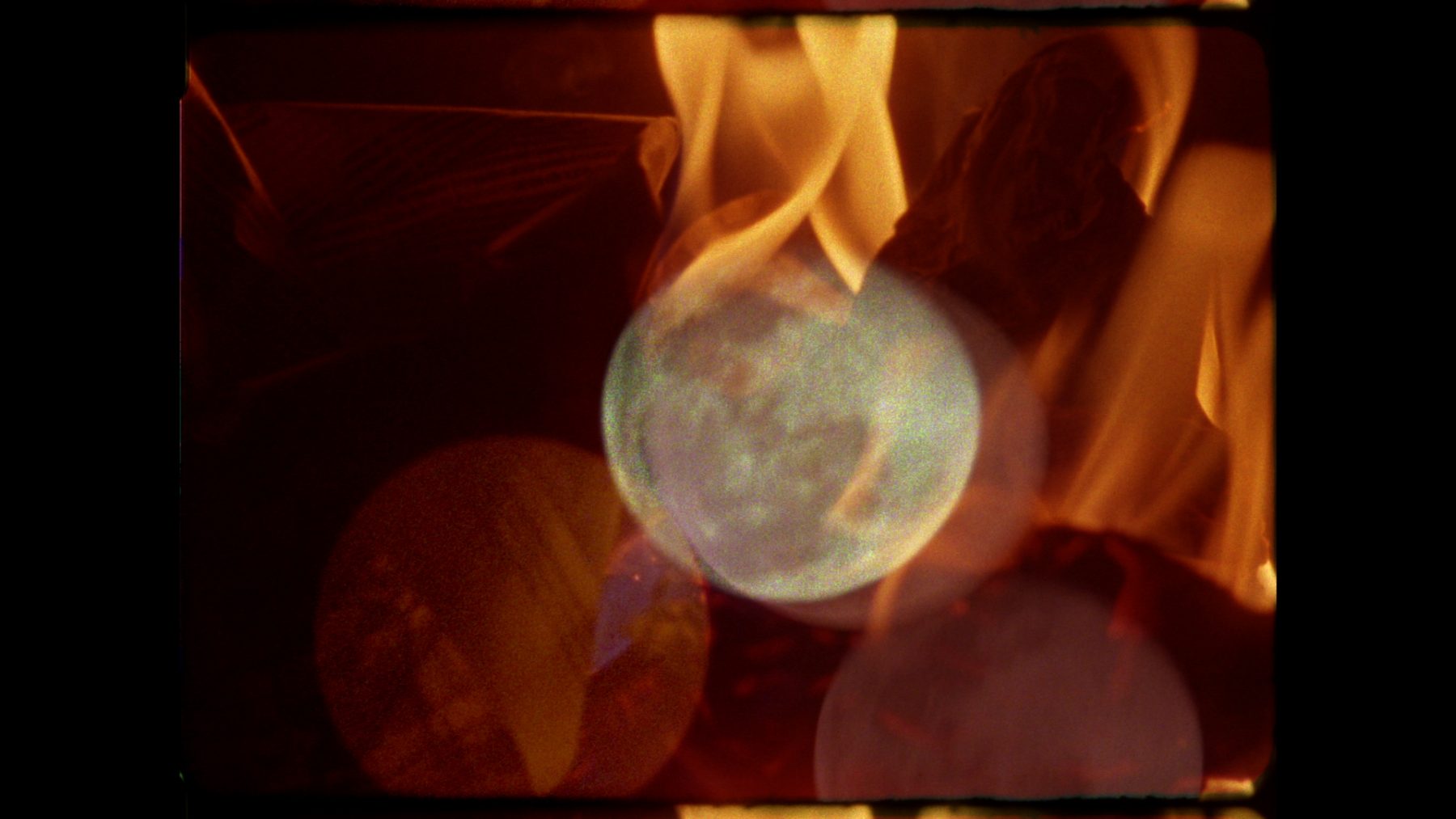
Thesis 51: Every contingent reason enables and supports the factual, productivist and digital vector of reason.
Thesis 52: Productivist Reason implies an autophagic energy automatism.
Thesis 53: rEason is the productivist and autophagic nucleus of systems of images.
Thesis 54: reAson is the radical and progressive affirmation of the evidence of its reality.
Thesis 55: reaSon in the Anthropocene develops and affirms an energetic hyperimage of the world[11].
Thesis 56: reasoN has only one way of explaining what does not emerge from it, and that is to reduce it to nothing.
Thesis 57: The reduction to nothingness, as a practice of reason, implies an eidetic contraction and dispersion of beings.
Thesis 58: Every eidetic reduction opens paths to extinction.
Thesis 59: The instrumentalization of eidetic reduction leads to precariousness as an existential condition in the epoch of reason in the Anthropocene.
Thesis 60: The precariousness of the images is a condition of possibility of audiovisual appropriation.[12]
Thesis 61: Extinction, exhaustion, entropy, wear, fatigue, and destruction make up a possible ecological correlate of the directive images of contingent reason.
Thesis 62: The directive images of contingent reason imply three relational systems and processes of organizational internality: the world that produces reason in the Anthropocene, the limits postulated by critical reason and the nature that links speculative reason.
Thesis 63: The world, limits and nature constitute the guiding images of contingent reason.
____________
[11] The retroactive affirmation of planetary geological and atmospheric effects as clear causes of the corrosive effectiveness of the Anthropocene-Capitalocene determines the expansive scope of the linking and relational activity of Reason as an objectifying activity, as a faculty of the unconditioned, as expansion, generation and linking of categorical fields in the direction of the conformation of object inlays, eidetic retractions, intentional permutations, as well as cognitive catastrophes and ecological extinctions. All of this is articulated by Reason in the midst of a clear and continual contraction of hydrocarbons and energy that is increasingly radical.
[12] Precariousness implies a qualitative and eidetic retraction of objects, which enables an intermediate and connecting constructivity between relational qualities that objects emit and absorb and that allows us to experience the shamanic constructivism of the audiovisual process from a synthetic point of view as additive and subtractive facets of qualitative and objectual incrustations, clearing a whole field of audiovisual entities and cinematic appropriations (dis)oriented towards objects.
____________
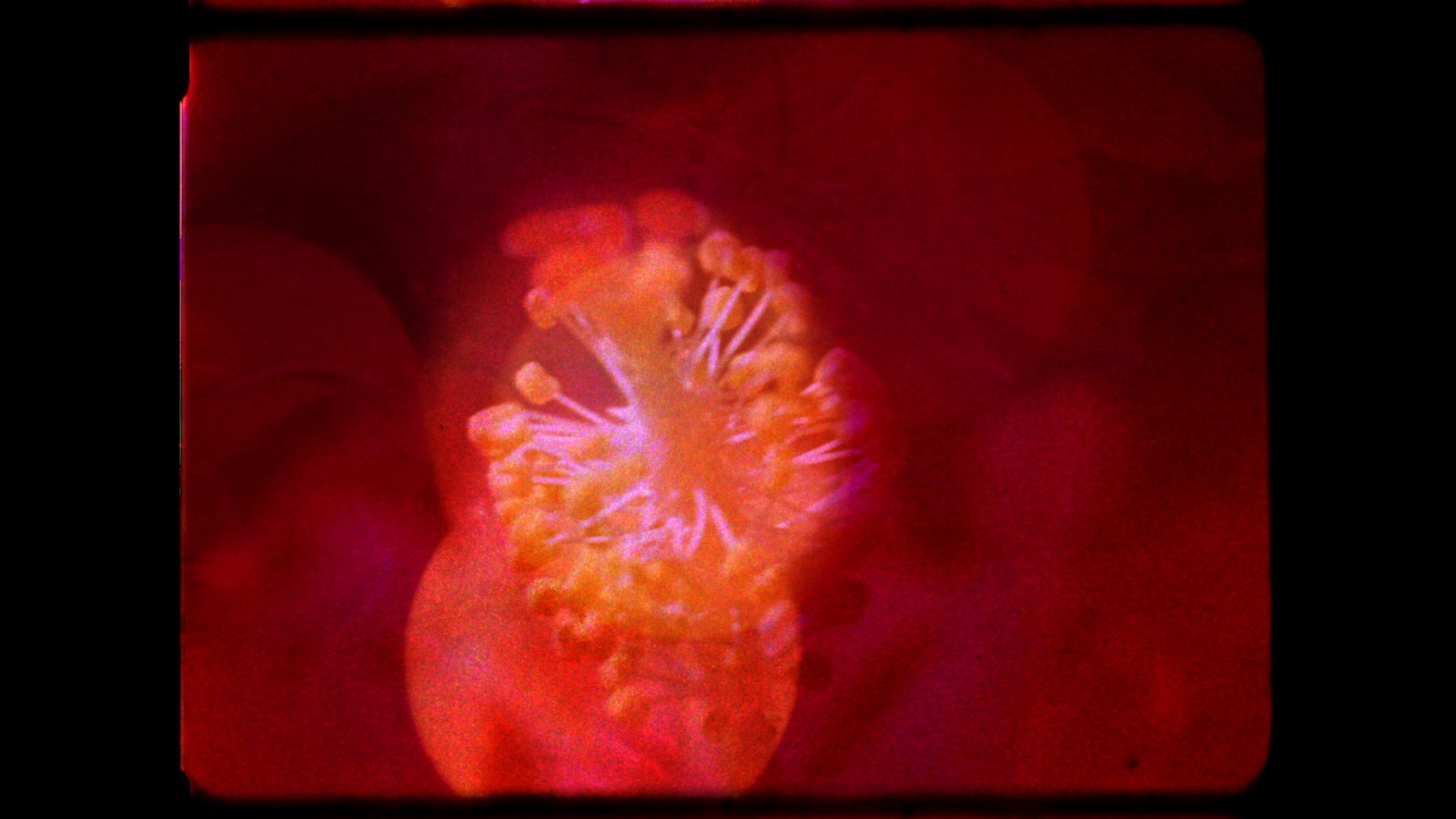
Thesis 64: The constructivist differentiality of contingent reason according to its connection with each of these guiding images generates: 1) a productivist and objectifying reason in relation to the world (Capitalist realism); 2) a critical and reflective reason in relation to the limits (Ecological realism); 3) a speculative reason in relation to nature (Speculative realism).
Thesis 65: The first relational process of organizational internality (objectifying reason) implies a deterministic, scientistic, objectual, realistic, cognitive, epistemic production, as well as the assertion of the ontological one-sidedness of the world.
Thesis 66: The objectifying perspective of reason in the Anthropocene, in its productivist relationship with the world, presupposes a pre-existing and inherent structure to nature that enables the objectivity of the world.[13]
Thesis 67: Contrary to objectifying reason, the relational process of critical reason (Ecological Realism) presupposes the radical and irreducible exteriority and objectivity of nature on which basis the necessary limits for the destructive activity of reason in the Anthropocene will be determined.
Thesis 68: The reflective perspective of critical reason, in its ecological relationship with the world, implies the establishment of limits for the productivism of reason in the Anthropocene.
Thesis 69: Finally, the relational process of speculative reason links the world as a perspectival hyperimage in motion from which nature is conceived as multinaturalist circumstance from its immediately relational multiplicity.
Thesis 70: The perspectivism of speculative reason, in its multinaturalist link with the world, enables the capacity of simultaneous perception according to incompatible, paradoxical and irreconcilable perspectives
____________
[13] This objectifying perspective also supposes and considers work as an anthropological invariant as a practical principle of transformation and effective production of the world. Would work as an anthropological invariant not suppose, in turn and as a correlate of its apparent invariance, a speculative invariant (perhaps more metaphysical than speculative) as a horizon of telematic determination present in multiple layers of human and posthuman history? Wouldn’t Reason, as a faculty of the unconditioned, be precisely the aberrant retroactivity of a radical affirmation that determines the conditions of real experience? It is no coincidence that, in the anti-ecological model of modernity, the pyramid is the figure that determines the representation of the food chain, symptomatically establishing a pharaonic condition of transcendent illusion for the current civil disassociation of the Capitalocene, thus producing not only pharaonic resurrection machines (corporate pyramids) but the objectifying assemblages of the sinister machine of capitalist precarization, devastation and annihilation.
____________
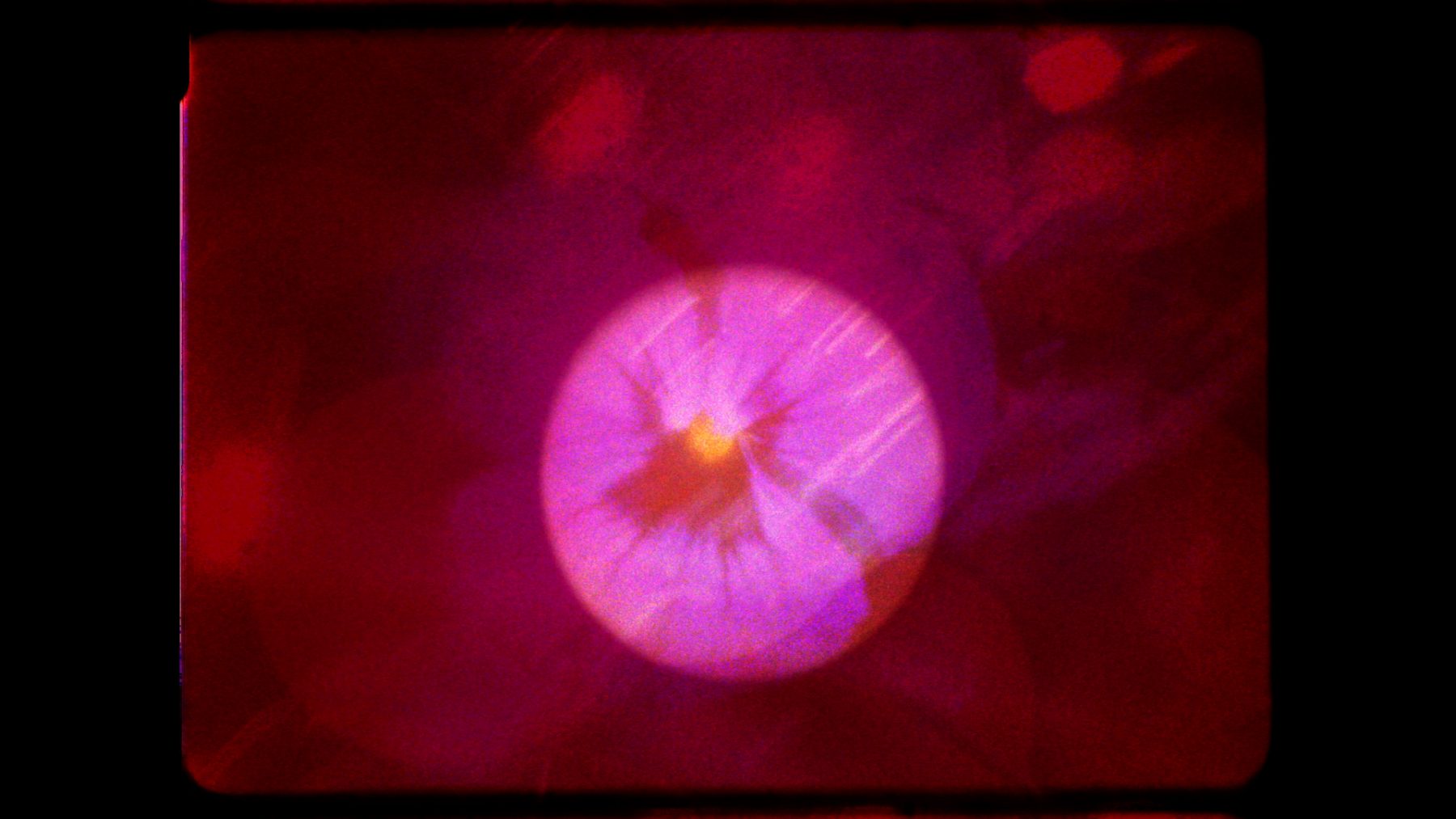

Thesis 71: Speculative reason is the relational, anthropophagic and autophagic perspective of Shamanic Materialism.
Thesis 72: Shamanic Materialism links ancestrality, extinction and trance as speculative and multinaturalist perspectives of the dialectical hyperimage of movement.
Thesis 73: Incompatible, paradoxical and irreconcilable perspectives constitute the relational correlate of the dialectical hyperimage of movement.
Thesis 74: What exists in multinature involves a turbulent mythical flow that continues to pulse and to extinguish; it is the powerful volcanic life of beings and things, a life that, through the cinematic and audiovisual process, expresses them not as differently perceived self-identical entities but as immediately relational multiplicities.
Thesis 75: The radical nature of the contingency asserted by materialism implies recovering the idea that destruction and annihilation can exist without any counterpart, without any compensation; it is about recognizing that there are absolute losses that will never be recovered, events without any consequences, civilizations and entire peoples annihilated and lost in the nothingness of History without leaving any trace, like those great rivers that disappear in the sands of a planetary desert. The idea that in the world there are a number of things, objects, subjects, events, flows, lives and events that will be absolutely annihilated and not recovered, the reality of that idea, we say, manifests the abrasiveness of the vast machinery of annihilation that inhabits the desert of the real.
Thesis 76: The perspectivism, the conversion and the mythical connection of the dialectical hyperimage open an eventual field in History.
Thesis 77: Shamanic materialism as a cinematic and audiovisual process leads to and entails a political film-trance of agitation in which the agitation would no longer emanate from a coming to awareness or call for mass mobilization, but would consist of placing contingencies and circumstances in a trance, including, in the first place, Reason itself, relating violence and contingencies to each other, so that through trance, violence, myth, ancestry, precariousness and extinction a new cosmological and cosmopolitical perception of the Missing People is formed.
Colectivo Los Ingrávidos (Tehuacán) is a Mexican film collective founded in 2012 to dismantle the commercial and corporate audiovisual grammar and its embedded ideology. The collective is inspired by the historical avant-gardes, and their commitment to using both form and content against alienating realities. Their methods combine digital and analog mediums, interventions on archival materials, agitprop, mythology, social protests, and documentary poetry. Their radical experimentations on documentary and cinematographic devices produce images, both visual and auditory that are political possibilities in their own right.
Their work has played at various film festivals including International Film Festival Rotterdam, RIDM Montreal International Documentary Festival, Images Festival; Punto de Vista, The Florida Experimental Film/Video Festival, CROSSROADS, BFI London Film Festival, Jihlava International Documentary Film Festival, Media City Film Festival, Experimental film festival Process, Ambulante Cine Documental, International Short Film Festival Oberhausen, Ann Arbor Film Festival, and Festival Internacional de Cine FILMADRID.
Their work was a part of the 2019 Whitney Biennial, and the Bienal de la Imagen Movimiento in Buenos Aires (BIM). They were part of the 2018 Flaherty NYC Winter-Spring Series Common Visions. They were awarded jury prizes at Media City Film Festival, the Youth Award at Punto de Vista, the Marian McMahon Akimbo Award at the 2018 Images Film Festival, and the Norberto Griffa award to Latin-American Audiovisual Creation at the 2014 and 2016 BIM. Their recent collection of poetry SOLARES was published by Evidence Press at the Centre for Expanded Poetics (Montréal) and Thesis on the Audiovisual will be published (London-Paris).